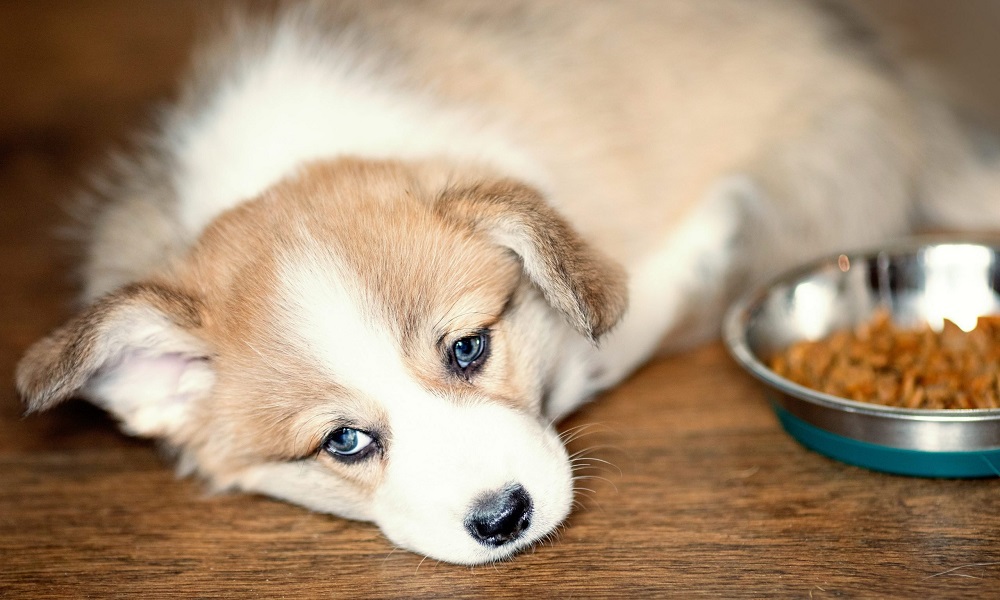Your dog might not eat without you watching due to separation anxiety or a need for social interaction. It could also indicate a learned behavior for attention.
Discovering that your dog hesitates to eat without your presence can be puzzling. Dogs are social creatures, and their bond with humans is an integral part of their lives.
This situation often stems from your pet’s need for company or reassurance while eating. Other factors include past experiences, where they’ve associated meal times with social bonding.
Addressing this peculiar habit requires understanding the underlying reasons why your furry friend seeks your observation during their mealtime. By providing a safe and comfortable eating environment and reassuring your companion, you can gradually encourage more independent eating habits.

Reasons For Behavior
Do you ever wonder why your furry friend won’t eat unless you’re there? Let’s dive into the reasons behind this behavior.
Separation Anxiety
Dogs with separation anxiety struggle when their owners are not nearby. This stress can affect their eating patterns.
- Refusal to eat alone is a classic sign of anxiety.
- Attachment to the owner makes them wait to be together to eat.
Offering comfort to your dog before leaving may help. Simply put their bond with you could be affecting their appetite.
Mistrust Or Fear
A dog’s refusal to eat can also stem from mistrust or fear. If they’re new to a home or have had negative experiences, they may not feel safe alone.
- Unfamiliar environments can cause hesitation during mealtime.
- Companionship offers a sense of security.
Create a safe space for eating and gradually build trust. Remember that patience and positive reinforcement are key to overcoming fear-related feeding issues.
Health-related Issues
Is your furry friend refusing to eat unless you are present? This odd behavior might point to underlying health concerns. Pet parents need to understand these health issues.
Noticing when your dog behaves unusually can help detect problems early. Let’s delve into some common health-related reasons behind this behavior.
Dental Problems
Dental issues could be causing your dog pain while they eat. Just like humans, dogs can develop tooth decay, gum disease, or even have a loose tooth.
These problems might make eating an unpleasant experience that they only feel safe to tolerate when you’re there to comfort them. Symptoms include:
- Bad breath
- Difficulty picking up food
- Bleeding or inflamed gums
- Visible tartar on the teeth
Regular dental check-ups with your vet can keep your dog’s mouth healthy.
Digestive Disorders
If your dog waits for you to watch them eat, digestive issues could be the culprit. Conditions such as gastritis, intestinal parasites, or even a blockage might make your dog feel uneasy about eating. Digestive disorders might cause:
- Lack of appetite
- Vomiting
- Diarrhea
- Abdominal pain
Eating in your presence may offer them a sense of security if they’re feeling vulnerable due to discomfort or nausea. A vet visit is crucial to address these health concerns.
Previous Experiences
Dogs remember things. Past experiences can affect their behavior. Imagine your dog’s past like a storybook. Each page holds memories. Good and bad.
These memories can shape your dog’s eating habits. Let’s dive into how these experiences can lead to your dog only eating when you’re watching.
Negative Encounters
Pets feel just like us. Bad memories can linger. Maybe your dog had a scary moment while eating alone. A loud noise. A strange person. Another pet bullying them.
This can lead to a dog feeling uneasy. They seek the safety of their human’s presence. Eating becomes a shared activity, not a solo one.
- Noise fears: Thunder or fireworks during mealtime can leave a lasting scar.
- Food bullying: If another pet once snatched their meal, it can lead to anxiety.
- Human absence: Eating alone in a kennel or at a shelter can create a need for company.
Feeding Routine Changes
Sudden changes can confuse dogs. Dogs like knowing what to expect. Think about a child. If lunchtime keeps changing, a child feels unsure. It’s the same for dogs.
A move, a new feeding spot, or different meal times can unsettle them. Routine gives comfort. Your dog may want you close to feel sure. It’s their way of coping with change.
| Before Change | After Change |
|---|---|
| Consistent mealtime | Meals at random hours |
| Quiet, familiar space | New, noisy environment |
| Owner always present | Owner often away |
Solutions And Training
You’re not alone! This common issue can stem from attachment or anxiety. But fear not, as ‘Solutions and Training’ can help your dog overcome this behavior. Let’s dive into practical strategies to help your pup.
Gradual Desensitization
Gradual desensitization is a key approach. Start by standing a little further away at each mealtime. Over time, increase the distance until your dog is comfortable eating alone. Below are the steps to follow:
- Day 1-3: Stand one step away from the bowl.
- Day 4-6: Increase to two steps away.
- Day 7-9: Observe from the room’s edge.
- Day 10+: Watch from a different room.
Patience is essential. If your dog shows stress, slow down the process.
Positive Reinforcement Techniques
Use positive reinforcement techniques to encourage independent eating. Praise and treat your dog after they eat without your presence. A reward system tells your dog that they’re doing great on their own. Here’s a simple guide:
- Place the food bowl down and step away.
- When your dog starts eating, praise them cheerfully.
- After finishing, offer a small treat or extra affection.
Repeat these steps consistently. Soon, your dog will associate eating alone with positive experiences.
Conclusion
Understanding your dog’s eating habits can be puzzling. A pet craving your presence for meals suggests a bond beyond food.
It’s essential to ensure their health isn’t affected. Each dog is unique; patience and attention will unlock their eating quirks.